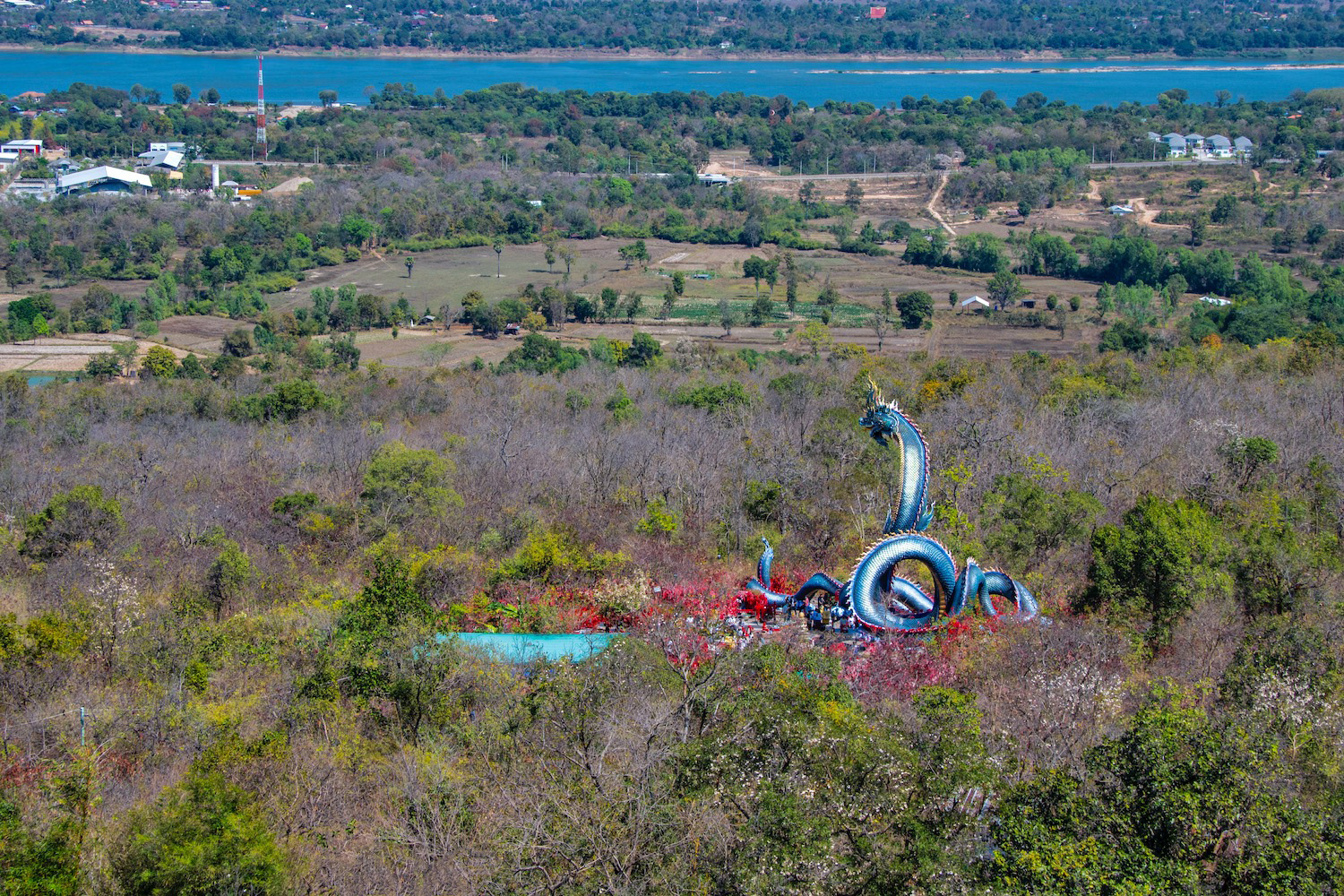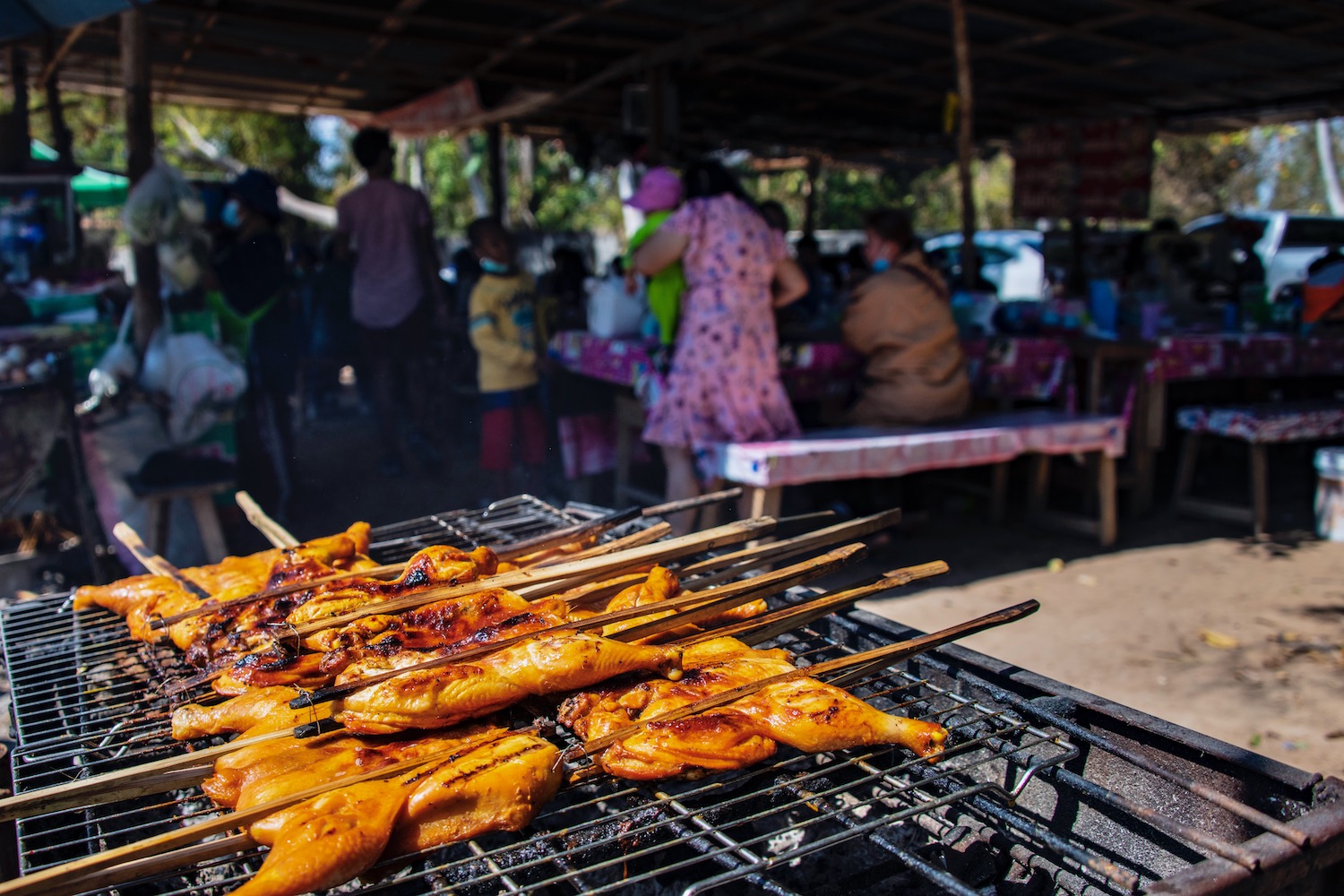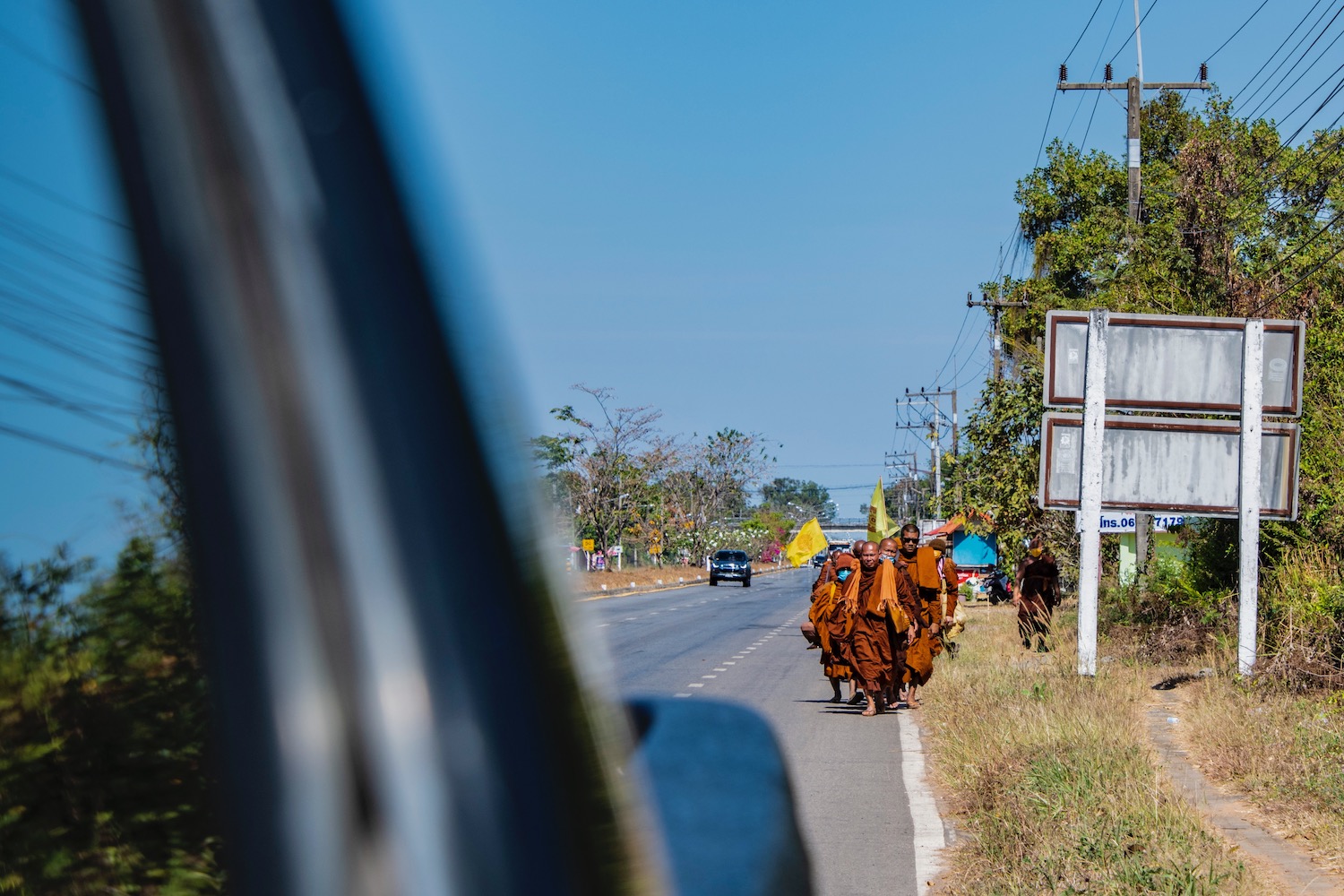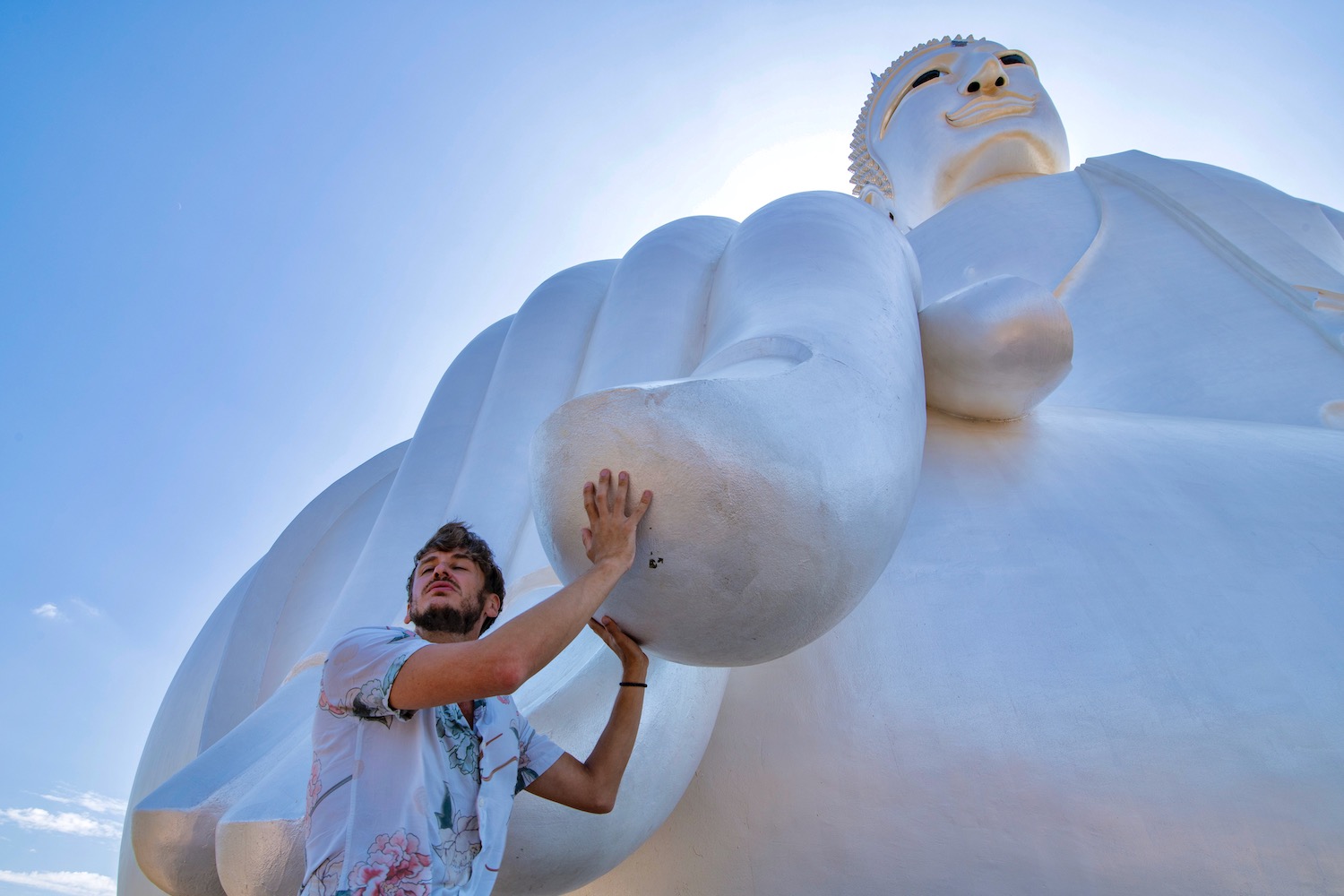Many visitors to Thailand don’t even know where—or what—Mukdahan is. I recently mentioned it in casual conversation, and the person I was speaking with thought I was referring to a dish.
Indeed, even if the Isaan region is already on your travel radar, it’s likely that this interstitial province is not. (Even if, as I’ll explain soon, you’ll probably be passing through there, if unwittingly.)
Now, I’m ultimately writing this post about a pretty existential question—namely, is Mukdahan worth visiting? But in order to get there, I’ll address some of the more practical aspects of traveling to and within the province, which may help litigate the answer in a less dramatic way.
How to Get to Mukdahan
For most travelers, the topic of Mukdahan hotels ends up being moot. While there is an argument to be made for staying overnight here, Mukdahan is a place you visit while passing through. Specifically, driving along the Mekong River in far eastern Isaan, whether heading northward (from Ubon Ratchathani to Nakhon Phanom), or instead heading in the other direction, i.e. southward.
If you’re coming from further afield, however, it can be more cumbersome to get here. Let’s say you fly from Europe and make a stopover in Doha (which will necessitate you to take out mandatory travel insurance to Qatar for visitors) before landing in Bangkok. Since Mukdahan doesn’t have an airport, the most direct way would be to fly from Suvarnabhumi to Ubon Ratchathani, and to rent a car there and drive to Mukdahan.

My Favorite Things to Do in Mukdahan
Visit Wat Roi Phra Phutthabat Phu Manorom
If you Google what to do in Mukdahan, one of the first results will be Wat Roi Phra Phuttabat Phu Manorom temple. As you might expect at a temple in the Isaan region, one of the most prominent parts of this temple is a large and elaborate image of Naga, aka the snake deity.
(But don’t skip the Buddha)
However, before moving on to another part of your Mukdahan itinerary, look up—literally. There’s a massive Buddha in the “upper” part of the temple complex (which is really more of a Buddhist amusement park than a single temple). It’s not only beautiful in its own right, but offers a magnificent view of the Mekong River (and Laos, over it) in the foreground.
Have an extremely authentic meal
It’s hard to have a bad meal in Isaan, or anywhere in Thailand really. What I love about everything I ate in Mukdahan, however, is just how real it was. We’re talking gai yang (grilled chicken) barbecued over a makeshift fire in a parking lot, and som tam (papaya salad) made to order—literally, they shred the green papaya right in front of you!
Take your time
Unlike the Mukdahan attractions I’ve described thus far, Phu Pha Thoep National Park isn’t one you can easily visit if you’re just passing through. Alongside the larger Sirindhorn Dam, it’s an ecotourism paradise that really demands you take a bit more time (ideally staying at least one night).
Hit up Sam Phan Bok (if you haven’t already)
Beyond the cities of Ubon Ratchathani and That Phanom (which I have mentioned ad nauseam), Mukdahan is also very close to Sam Phan Bok, aka the Grand Canyon of Thailand. It should almost go without saying, but since almost doesn’t count (as every 90s kid knows), I’d rather remind you lest you miss it.

Mukdahan is On the Way to Where You’re Going
As if I haven’t made it clear throughout this post, Mukdahan is a place you’re likely to stop anyway, assuming you’ll be traveling through eastern Isaan. Or Isaan at all: Unless you’re coming only for one specific experience (such as the Red Lotus Sea in Udon Thani in February, or the Phi Ta Kon festival in Loei in June), you’ll want to take a comprehensive trip throughout the region, which—at a minimum—will include Ubon Ratchathani.
If you have at least a week here, then it simply makes sense to travel from Ubon to Mukdahan, or to go the other way. One time, for example, I started and ended in Udon Thani, heading from Udon to Roi Et, and then to Ubon Ratchathani. I headed north from there to Nakhon Phanom, stopping en route in Mukdahan; I finished the trip by driving westward from Nakhon Phanom back to Udon Thani, via Sakhon Nakhon.

Other FAQ About Visiting Mukdahan
Is Mukdahan worth visiting?
Mukdahan is definitely worth visiting if you happen to be in eastern Isaan. Whether because of amazing Mekong vies from its “Big Buddha,” or how heavily it leans into Naga imagery, it is in many ways exemplary of what this part of Thailand has to offer visitors.
What is the best time to visit Mukdahan?
Like most of the rest of Thailand, Mukdahan is best during the dry and relatively cool months between late November and early March. While it remains dry throughout the rest of March and most of April and even May, temperatures can become unbearably hot. Likewise, although I’m increasingly a fan of traveling in Thailand during the rainy season, this doesn’t necessarily extend to rural Mukdahan.
Are there any national parks near Mukdahan?
If you’re staying in Mukdahan for a night or two, Phu Pha Thoep National Park near Sirindhorn Dam is relatively easily accessible. Do keep in mind, however, that this is not really an optional for travelers who are simply passing through en route between Udon Ratchathani and Nakhon Phanom.
The Bottom Line
Is Mukdahan worth visiting? I think my answer to this question is pretty obvious. What’s really at issue, of course, is whether or not you plan to be in this part of Thailand to begin with. If you do—namely, you plan to travel (ideally via private car) from Ubon Ratchathani to Nakhon Phanom, or vice-versa—then in my opinion, it would be silly not to stop in Mukhadan, at least for the afternoon. At a minimum, you can explore a unique temple with an amazing Mekong view, and have a delicious local lunch. Need personalized help deciding the contours of your trip off Thailand’s beaten path? Consider commissioning a custom Thailand itinerary!






